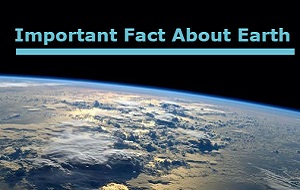| The Earth also called | Blue Planet |
|---|---|
| What is the Circumference of Earth | 40,232 Kilometers |
| Nearest position of earth to sun | Perihelion |
| The earth reaches its perihelion on | 3 January |
| Farthest position of earth from sun | Aphelion |
| The earth reaches its aphelion on | 4 July |
| Earth Spins on its imaginary axis from | west to east |
| The longest day in North Hemisphere is | 21 June |
| The shortest day in North Hemisphere is | 22 Dec |
| What is Earth’s average orbital velocity | 29.79 Kilometers/s |
| Earth takes time, revolution around the sun is | 365 days, 5 hrs, 48 min and 45.51 sec |
| The equator represents in | 0° latitude |
| The North Pole represent in | 90° N |
| The South Pole represent in | 90° S |
| 23½° N represents | Tropic of Cancer |
| 23½° S represents | Tropic of Capricorn |
| 66½° N represents | Arctic Circle |
| 66½° S represents | Antarctic Circle |
| How many latitudes are there | total 181 latitudes |
| How many longitudinal zones | 24 longitudinal zones |
| Each longitudinal zones being | 15° or 1 hour apart in time |
| When Lunar Eclipse occurs | earth comes between sun and moon |
| The point of origin of earthquake is called | Seismic focus |
| The point on the earth’s surface vertically above the earth | Epicentre |
| The passage of earthquake waves is recorded by | Seismograph. |
| How many types of rocks are there | 3 (Igneous, Sedimentary, Metamorphic) |
Important Fact About Earth
1
Share.





1 Comment
Sir plz its a request..pdf bna dya karo..further reading lyi ta jo asi save kar sakiye